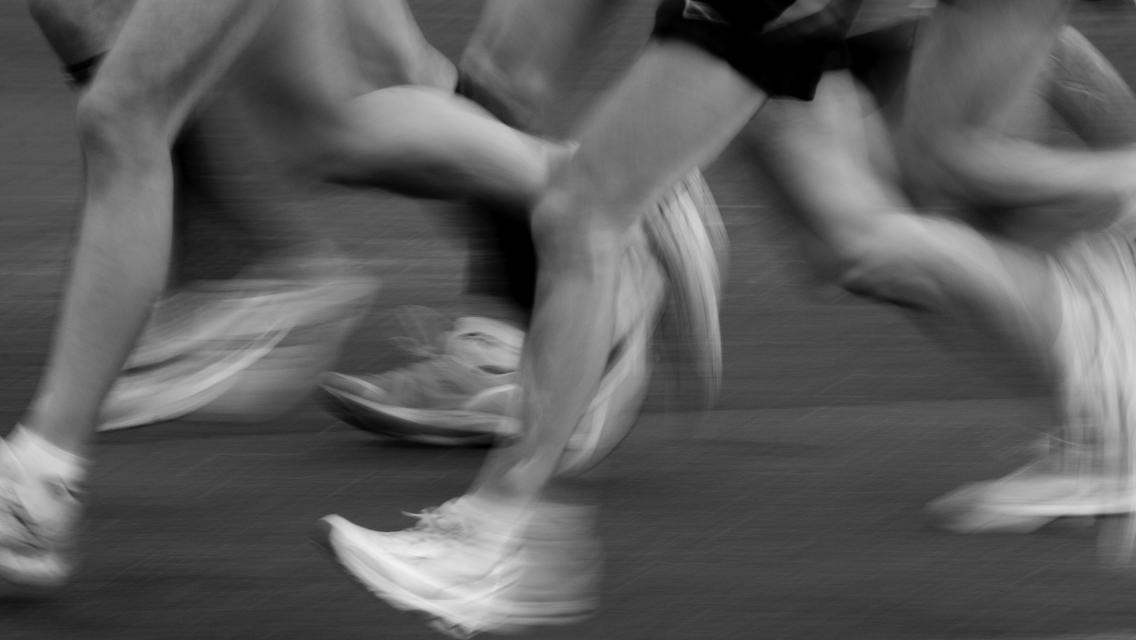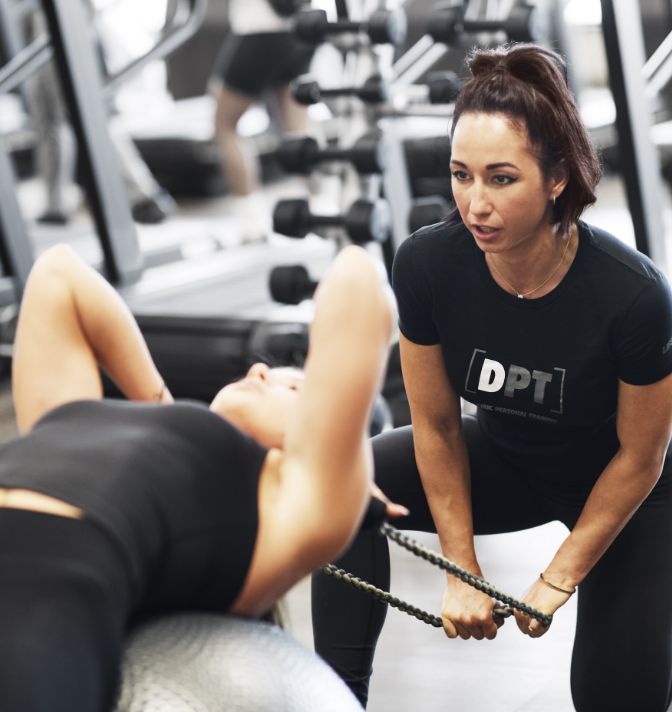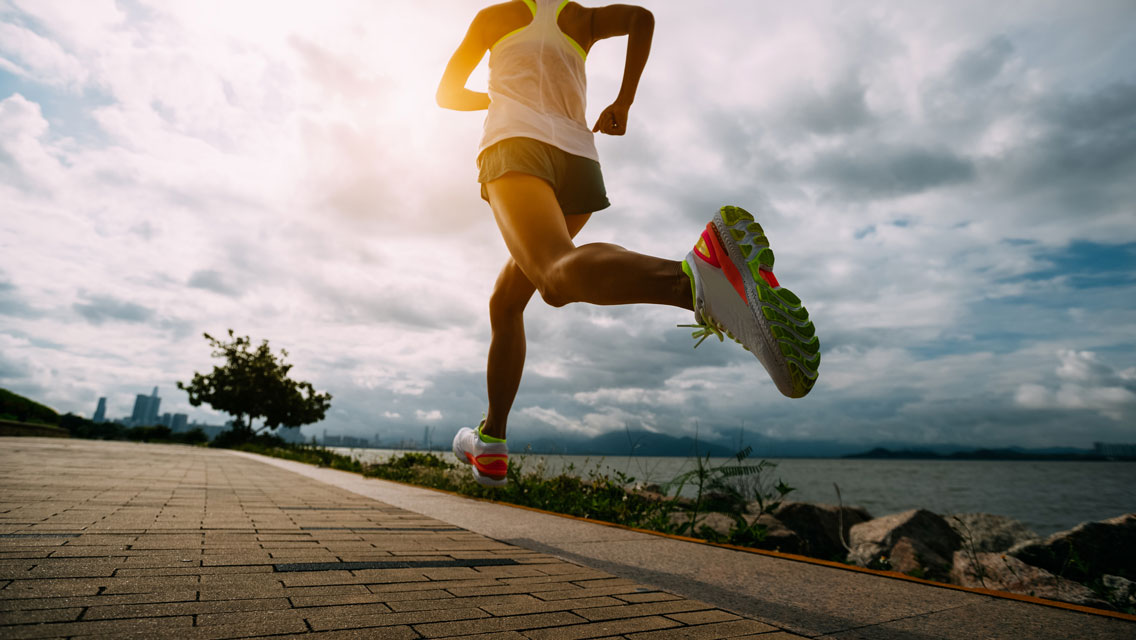Many people don’t realize they strike on the posterior, or outside, of their feet when they’re running. It’s a landing position typically based on how a runner’s legs swing through in stride, and is more pronounced if they’re bow legged, or when they’re running down hills or leaning back. Do they mean to do it? No. Is it common? Yes.
This can be problematic: Landing on the outside of your feet can cause tightness in the lateral chain of the legs, including the muscles, fascia, and soft tissue, leading to misalignment. You may then experience external rotation of your hips, as well as your lower limbs. One example is toe whip, which occurs when the toe comes off the ground and kicks or whips laterally. (After training, your muscles naturally get tighter — that’s why it’s important to strengthen the other side to balance them out. Deep tissue work, such as working with a Dynamic Personal Trainer, Dynamic Stretch Specialist, or massage therapist can help prevent our muscles from getting too tight and out of control.)
An exaggerated foot strike in the front of the body can also put the angle of your shin in a compromised position. This can lead to a “braking” effect at the foot’s first point of contact when it’s bearing weight. The more the foot is in a check-mark-like position, and the less vertical it is to the shin, the more aggressive the force of the strike is in the foot, shin, knee, and hip.
While running drills can help you change how your feet hit the ground when you run, strengthening your abductors and medial calf muscles can build your resilience to running’s impact. It also helps your body accept the weight of your current stride, so any existing imbalances don’t get worse.
These are four of the exercises I often encourage runners to do to strengthen these muscles.
1. Squeezers
These strengthen your abductors and the muscles high in your groin.
- Place a workout ball on the ground between your legs and stand over the ball.
- Use your lower body to squeeze the ball at 50 to 70 percent effort for five seconds.
- Rest for three seconds.
- Repeat six times.
2. Side Plank “Captain Morgan”
This movement ignites the firing of your inner abductor muscles, which helps to build new muscle.
- Position yourself in a side plank, with your shoulder stacked above your elbow and the foot of your top leg in front of the foot of your bottom leg.
- Alternating your legs, draw one knee at a time toward your chest, as if you’re marching. Take a two to three second pause each time your knee is raised before returning your leg to the starting position.
- Perform for 20 to 40 seconds.
- Switch sides and repeat for another 20 to 40 seconds.
3. Side Plank “Copenhagen”
This is a progression of the previous side plank movement; it also strengthens the abductors. Focus on keeping your body, especially your legs and feet, in control throughout the movement.
- Position yourself in a side plank, with your shoulder stacked above your elbow. Place your top foot on top of a box or step that’s about a 12 inches tall.
- Raise your bottom foot about halfway or so up the box or step.
- Lower your foot back down to the base of the box.
- Continue to raise and lower your foot for 10 reps (about 20 to 30 seconds).
- Rest for two to three seconds before switching sides; repeat for another 10 reps.
4. Low Box Step-Up
This movement is great for the vastus medialis (part of the quadriceps muscle group), the vastus medialis oblique (the medial head of the quad, a muscle inside your thigh) and the groin. The leg that is in contact with the box or step should be the one doing all the work.
- Stand sideways on a low box or step (about 12 to 20 inches tall) so that one foot is grounded on the box or step and the other is hanging in the air.
- Sit your hips back to lower into a quarter squat with your grounded leg as you lower your outside foot to the ground.
- Tap the outside of your heel to the ground.
- Without pushing off your heel or foot, straighten your standing leg over a count of two.
- Repeat for 20 to 25 reps (about 40 to 60 seconds).
- Switch sides and repeat for another 20 to 25 reps.





